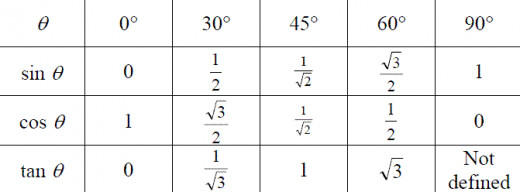Projectile Motion
Projectile motion is a form of motion in which an object or particle (called a projectile) is thrown near the earth's surface, and it moves along a curved path under the action of gravity only. The only force of significance that acts on the object is gravity, which acts downward to cause a downward acceleration.
To find Voy , Vox and time use this equation : (
Voy = Vo * Sin Θ Vox = Vo * Cos Θ 0 = Y0 + Voy * t + 0.5 * g * t²
To find the Magnitude of projectile motion use this equation :
Vo = √(Voy² + Vox²)
To find the Direction of projectile motion use this equation :
Tan Θ = Voy ÷ Vox
To find the max range of projectile motion use this equation :
X = Vox * time
To find the max height of projectile motion use this equation :
XH = Voy² / 2g
Examples :
if Vo = 10 and Θ = 30 then first we must find the time by using Voy / g which is 10 * Sin 30 = 5 / 10, but it is only the time to reach the max height thus 0.5 * 2 is the time for max range which is 1 second.
Now to find the max range get the Vox by 10 * Cos 30 = 5√3 and times it with the time which is 1 second so the max range is 5√3
V = Ω * R (R is radius) this is used to describe relation between angular velocity and linear velocity
a = α * R (in rad/s²) this is used to describe relation between angular accel and linear accel
V1 = V0 + a * t (in m/s)
Ω1 = Ω0 + α * t (in rad/s)
ac = V² / R (in rad/s²)
αc = Ω² / R (in rad/s²)
To find the Direction of projectile motion use this equation :
Tan Θ = Voy ÷ Vox
To find the max range of projectile motion use this equation :
X = Vox * time
To find the max height of projectile motion use this equation :
XH = Voy² / 2g
Examples :
Now to find the max range get the Vox by 10 * Cos 30 = 5√3 and times it with the time which is 1 second so the max range is 5√3
Circular Motion
Circular Motion is a movement of object along side of the circumference of a circle or rotation along a circular path.
In Circular Motion V is changed to Ω which is omega while a = α which is alpha.
Equation used in Circular Motion :V = Ω * R (R is radius) this is used to describe relation between angular velocity and linear velocity
a = α * R (in rad/s²) this is used to describe relation between angular accel and linear accel
V1 = V0 + a * t (in m/s)
Ω1 = Ω0 + α * t (in rad/s)
ac = V² / R (in rad/s²)
αc = Ω² / R (in rad/s²)
Fc = M * αc (in newton) this is used to find centripetal force
V = √(µs * g * R) (µs dry = 0.9 ice = 0.1) this is used to find velocity needed to turn on cliff
V = √(µs * g * R) (µs dry = 0.9 ice = 0.1) this is used to find velocity needed to turn on cliff
V = √((G * Mearth) / R) this is used to find velocity of satellites revolving the earth
Converting cycle = ° = rad
1 cycle = 360° = 2π rad
Examples :
Convert to radian :
180° = 180 / 360 * 2π rad = π rad
90° = 90 / 360 * 2π rad = π / 2 rad
Convert to ° :
π / 4 rad = (π / 4) / 2π * 360 = 45°
3π / 4 rad = (3π / 4) / 2π * 360 = 135°
Circular Motion in 2 Wheels
Converting cycle = ° = rad
1 cycle = 360° = 2π rad
Examples :
Convert to radian :
180° = 180 / 360 * 2π rad = π rad
90° = 90 / 360 * 2π rad = π / 2 rad
Convert to ° :
π / 4 rad = (π / 4) / 2π * 360 = 45°
3π / 4 rad = (3π / 4) / 2π * 360 = 135°
Circular Motion in 2 Wheels
For the first picture V1 = V2 while the second picture Ω1 = Ω2
Examples :
The first picture if R1 = 10, R2 = 20 and Ω1 = 1 then ? = Ω2
To solve this use the equation V = Ω * R. First find the V which is 1 * 10 = 10, then using the same equation 10 = Ω2 * 20 which is 10 / 20 = 0.5 rad/s
The second picture if R1 = 10, R2 = 20 and V1 = 10 then ? = V2
To solve this use the equation V = Ω * R. First find the Ω which is 10 / 10 = 1, then using the same equation V2 = 1 * 20 which is 20 m/s










